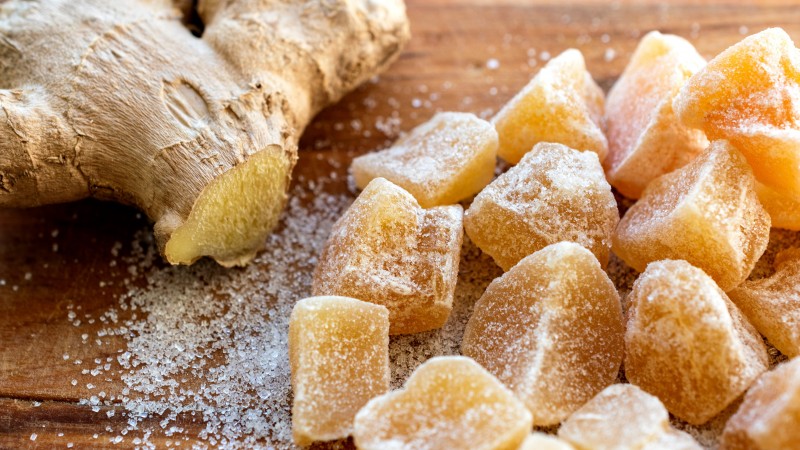Ginger: Germany doubles imports
March 27, 2025 at 11:24 AM ,
Der AUDITOR

Fierce competition
As FreshPlaza states in its latest ginger report, 2024 was characterised by a shortage of raw materials and high prices on the Peruvian ginger market, resulting in lower exports to Europe. By contrast, production is expected to increase by 40-70% in 2025, although plant diseases mean that quality could suffer significantly. Peru's market share in Europe has shrunk, while shipments to the USA are still going well. Peruvian market players currently see major competition from Brazil and China in particular, whose crops are putting pressure on prices.
In fact, Brazilian ginger is gaining market share in the USA, thanks in part to efficient logistics and mechanised cultivation. This enables producers to keep up with the competition from Peru. Despite some hurdles such as adverse weather conditions and delays at the ports, the Brazilian crop is larger this year, which should also be reflected in world market prices. Another advantage for US buyers is the shorter delivery route for Brazilian produce, which means more freshness and lower costs.
Costa Rica supplies the USA
Ginger prices in Costa Rica have also risen noticeably due to the shortage of goods. The South American country tends to be one of the smaller suppliers with a focus on quality. A volatile production situation and unstable weather conditions are causing uncertainty as to whether the country will be able to maintain its position as a stable supplier in the long term.
Importers in North America are currently relying more heavily on supplies from Costa Rica, as Brazilian exports have been paused since mid-January. However, US importers state that the quality of the goods from Costa Rica has deteriorated in recent weeks. Additional ginger is being sourced from China and Peru, with organic produce playing an important role in the latter. However, the tariffs imposed by Trump are likely to have an impact on imports from China soon. According to FreshPlaza, North American demand remains stable and Brazilian goods should also be available again in May.
Price chaos in South Africa
When there was a severe shortage in South Africa in February and hardly any ginger was available, imports from China and Thailand were traded at exorbitant prices despite their inferior quality. In the meantime, further deliveries are said to have arrived and the domestic crop is also contributing to the fact that prices have almost halved again; however, these declines are hardly noticeable in the supermarkets so far. Here, ginger still costs between USD 10.60/kg and USD 16/kg. The high prices are due to the expensive procurement costs that suppliers had to pay during the shortage. As more goods should now gradually become available again, market experts assume that prices should fall further soon, although the increased production costs should not be disregarded here.
Cheaper freight costs from China
China is also aware of the competition from Brazil and Peru, especially when it comes to shipments to Europe. The current export price for shipments to European countries is around USD 1,800/mt, which is the same price as last year. Between December 2024 and March 2025, Chinese ginger has undergone some noticeable price declines and freight costs have also fallen. While they were still USD 5,600 for a 40' FCL at the end of December, they are now USD 3,000. As more ginger is consumed in Europe in winter, imports have nevertheless been declining since March.
Quality issues and delivery delays
The decline is also noticeable in Germany. One importer told FreshPlaza that sales are currently still relatively stable, as usual after the carnival season, but the upcoming warm and sunny weather is likely to ensure that buying interest will fall sharply. There were also some quality problems in Q1 of 2025, particularly with deliveries from China, as the goods were harvested and shipped too early. Delays at the harbours were also reported, with shipments taking 60 days in some cases. This poses challenges for all market players. German buyers are also stating that the quality of Peruvian produce is falling; Peru has lost around 80% of its market share in Europe this year.
Italy is also currently mainly importing goods from China. Brazil is starting to ship young ginger by air, but traders told FreshPlaza that this type of product perishes quickly and is therefore difficult to store. At the end of the month, Thailand is also expected to resume shipments to Italy, albeit at a rather high cost.
Import value increases by more than 80%
Overall, EU ginger imports have increased significantly. Since the beginning of the year, 1,759 mt of ginger have been imported, an increase of 43.4% compared to the same period last year. The EU countries imported the most goods from China (+78.1% to 1,072 mt), followed by India (+19.6% to 220 mt) and Vietnam (+65.8% to 121 mt). In contrast, Nigeria suffered a significant decline in its deliveries to the EU (-37.7% to 101 mt). The largest importers in the EU were Germany, which more than doubled its imports, the Netherlands and Belgium. As the price per kilo has risen significantly, the import value of EUR 5.35 million is also more than 80% higher than last year's figure.
|
EU ginger imports, in mt |
|||
|
Supplier |
2024 |
2025 |
Diff. |
|
China |
602 |
1,072 |
78.1% |
|
India |
184 |
220 |
19.6% |
|
Vietnam |
73 |
121 |
65.8% |
|
Côte d'Ivoire |
64 |
104 |
62.5% |
|
Nigeria |
162 |
101 |
-37.7% |
|
Others |
142 |
141 |
-0.7% |
|
Total |
1,227 |
1,759 |
43.4% |
|
DG AGRI TAXUD Customs Surveillance System, 01/01-23/03 09101200 Ginger, crushed or ground |
|||
View more
- price charts





